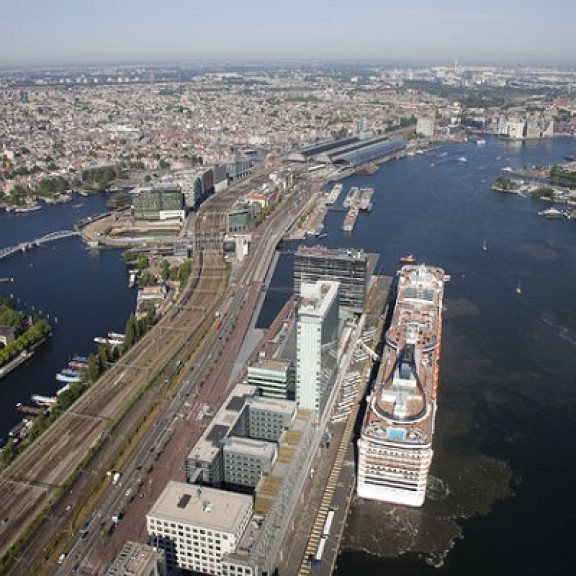
Port of Amsterdam advocates need for safety at shore connection
Port of Amsterdam supports the intention of the Amsterdam City Council to construct a fixed shore connection as part of efforts to further boost the development of the city’s Northern borough.
However, Port of Amsterdam has released the statement below following the adoption by the Amsterdam City Council of the Provincial Executive’s preferred decision on 20 July.
Bridges must comply with a number of nautical requirements (per the Inland Waterways Directive) in order to qualify as safe. State Harbour Master Marleen van de Kerkhof: ‘I have yet to see a design that I would consider safe for vessels using these waters. I am also concerned about the City’s preferred location, which will lead to additional complications. It is dangerous for a bridge in such a busy waterway to be located so close to a nearly 90-degree curve and such a narrow section of the waterway. This restricts the manoeuvring room for vessels, making it more difficult to anticipate oncoming traffic on this busy waterway. The public duty of the Harbour Master’s Division is to manage shipping traffic safely, efficiently and in a sustainable manner. We believe the addition of a bridge would obstruct the efficient flow of traffic, compromising safety as a result. We also note that bridges are not always discernible in poor-visibility conditions such as fog, rain, smoke and haze. While commercial vessels have radar systems on board, this is not always the case with pleasure crafts, and Amsterdam accommodates tens of thousands of the latter year-round.’
In addition to the shipping safety concerns related to the construction of a bridge noted above, there are three other reasons Port of Amsterdam favours the idea of the construction of a tunnel or passage as an alternative. Port of Amsterdam CEO Koen Overtoom: ‘A large amount of the cargo unloaded in Amsterdam or processed here is transported on to the hinterland, so maximum accessibility of these areas needs to be guaranteed. The presence of a bridge should not undermine the current shift towards the use of high-cube containers. We already welcome these types of vessels in our Port, and this is only set to increase in the future. In addition to being more cost-effective to construct, the alternative of a tunnel is also safer for the public thanks to the use of smart lighting. A current example of this is the Maas Tunnel. Another advantage of building a tunnel is that the city will avoid having to pay the relocation costs of the Passenger Terminal Amsterdam (PTA), which will now need to be covered by the local authority. Finally, the construction of the new sea lock has expanded our gateway. We are particularly pleased about that, as it makes the ports located on the North Sea Canal more accessible. The new lock requires an investment of roughly €800 million on the part of the central government and the provincial and local authorities. The presence of a bridge would diminish that gateway.’
Port of Amsterdam continues to urge the Amsterdam City Council to consider both shipping safety and the Port’s economic interests. The Port – the fourth-largest in Europe – is one of the region’s key economic drivers, employing a total of around 67,000 people.